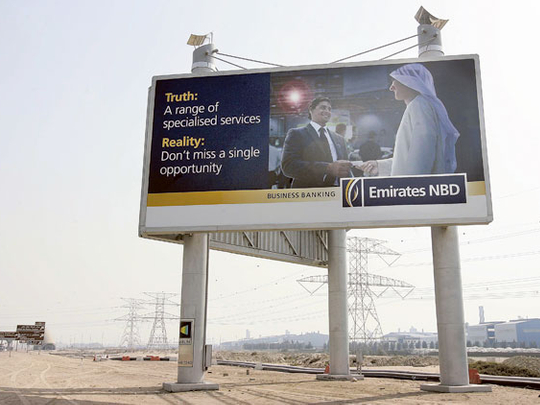
Dubai
The feel-good times are back again for the region’s ad industry. Advertising spend could be in for a 7.3 per cent increase next year and that too on top of a 4.3 per cent gain in the current one, going by ZenithOptimedia’s latest predictions on regional patterns.
“Earlier this year, we detected an increase in confidence and activity from international and domestic advertisers, and the violence in Egypt did not derail this recovery,” the report said. And since then there has been nothing to suggest that the confidence was misplaced, and no where is it more apparent than in the UAE.
Once the full-year ad spend tally is counted, the UAE’s will be the most buoyant and helped, no doubt, by the concerted campaigns put out by Dubai and its many supporting partners in the run up and post the Expo 2020 announcement. While that is still a further six years, local advertising and media planners can at least factor in one constant on their agendas all through this period. Most certainly, Dubai and its key agencies will make sure the Expo 2020 build-up phase is just as relevant as the six months that the event actually runs for.
But, come 2014, will local advertisers have to spend more to get their campaigns exposed to a media platform? In short, will media tariffs too see a hike brought on by the general upbeat sentiments?
Zubair Seddiqi, managing director at UM Dubai, for one reckons it is not a straight line between upbeat market sentiments and raised media rates. “Media inflation relies on various factors beyond mere sentiments; while bullish sentiment may help bolster confidence in the market, actual media inflation relies on overall macro- and micro-economic factors among many others,” Seddiqi said.
“The GDP is expected to grow at 4 per cent while the overall credit situation continues to be tight. The private sector has not loosened the purse strings yet...so to expect a dramatic increase in ad expenditure may not be entirely true. There is optimism but a cautious one.
“Additionally, one key factor is the performance of traditional media in terms of audience delivery and RoI (return on investment). This has been a matter of huge debate in the last couple of years.
“The rise of digital media opportunities and increased media investments in favour of digital media actually poses a huge challenge for traditional offerings in the long run. So, an increase in rate cards across the board may in fact be counter-intuitive.”
So, selective increases are what the local ad and media market seem to be heading for. Also, the region’s satellite TV media rate cards have already gone through a cycle of “significant” increases in the last two years.
In the near term, outdoor media is rated as one most likely to see a spike in demand and rates. “However, for outdoor there are no set rates and varies depending on location, size, campaign period and duration,” said Satish Maya, CEO of BPG Maxus. “This means an opportunity buy where rates are discounted very heavily based on demand-supply.
“We don’t really see any sharp increase in rates in 2014, apart from some sort of correction, particularly with radio and outdoor.”
Rajeev Khanna, member of the board at IAA UAE, also picks on outdoor advertising and radio as the most likely to see a firm up in rates, as well as in-mail advertising. “I don’t see significant increases forthcoming in traditional media; however, in the case of audited publications, they do have a case wherein some increases can be justified,” Khanna said.











